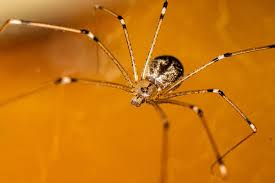An in-depth study on cellar spiders suggests that these spiders are harmless and incapable of biting humans. An urban myth exists regarding the poisonous capacity of these spiders that such long-bodied,scary cellar spiders are enriched with the deadliest venom. Still, they cannot administer this venom into the human’s skin due to their small and weak fangs. The same myth is also attributed to crank fly and harvestman. While comparatively, the brown recluse spiders are capable of sharp bites despite their short fang structure. From these facts, it can be discerned that either cellar spiders’ venom is not lethal to humans or musculature potency variation between these two spiders.
WHAT ARE CELLAR SPIDERS?
Cellar spiders have their origin from species of PHOLCIDS. Cellar spiders areknown all around the world with various names. Although they are commonly known by the name of cellar spiders, they have also known either other names like pholcid and daddy long legs. This genus of spiders is originated from northern states. Cellar spiders are known as daddy longlegs by virtue of theirthin toll legs. Cellar spiders can easily be distinguished from other spiders due to their unusual thin and long legs, which carry their oval and elongated body. The cellar spiders are commonly found in yellowish-brown color, and their legs may extend to 2 inches in size. The cellar spiders possess eight eyes; 3 eyes are on each exterior side of the head of cellar spiders, which looks like a small triangle shape.

CELLAR SPIDERS FACTS
Cellar spiders live on decomposing vegetative, small moths, fliesand, mosquitoes. Cellar spiders weave irregular pattern, lose, and hanging webs in sites where moisture and humidity ratios are higher like warehouses, corners of rooms, andsheds. The webs of cellar spiders can be found in unlit and dark places. Besides the corner, cellar spiders web can also be found in the ceiling,junkyards, scrapheaps, etc. Cellar spiders used to sway ups and t and dark places. Besides the corner, cellar spiders web can also be found in the ceiling,junkyards, scrapheaps, etc. Cellar spiders used to sway up and down on their web to wait for the entrance of any insect. When an insect enters the web, the cellar spiders vibrate their body in such a way that created an arithmetic pulsation on the web, and this web vibration becomes helpful in entangling the insects, which eventually fall prey to cellar spider.
CELLAR SPIDERS EGGS
During the whole life span, the female cellar spider is capable of laying about three sacs of eggs, each sac consisting of 13-60 eggs. These pouches of eggs look foamy and silky and are made from a light layer of silk. The cluster of eggs in the sacs look like the raw blackberry. The female cellar spiders keep the sacs of eggs in their pedipalps, at the front, close to their mouth until these eggs are hatched. The short-bodied female cellar spiders foster the same type of egg sac, but each sac contains 10-27 eggs, which are kept by them in their jaw. When the eggs arehatched, the spiderlings emerged from that place and openly found to adhere to their mother for a short period. The spiderlings have to go through five phases of molt to be developed as adult cellar spiders. The spiderlings attained the maturity to develop as adult cellar spiders within one year, and such adult cellar spiders have an expectancy of life of another two years.
CELLAR SPIDERS SIZE
The cellar spiders are commonly found in pale yellowish-brown and grey color. These spiders have an oval shape elongated body which is carried upon their eight thinly toll legs. The average length of an adult female cellar spider body is approximately 7 – 8 mm ¼ -5/16, while cellar spiders’ front legs are bout 40-50 mm (1 ¾-1 15/16) long.In contrast, an adult male cellar spider’s body length is about ¼ (6mm). However, there are short-bodied cellar spiders that body length is smaller than that of other cellar spiders. An adult male short-bodied cellar spiders have a body length of about 1/16 (1.6mm) having 3/8 (9.5mm) long front legs. The cellar spiders possess no antennae.
CELLAR SPIDERS VENOM
There is a myth that cellar spiders have the most lethal venom, but they are incapable of injecting this deadliest venom into human skin due to their short fangs, which called uncut. However, this urban myth is not validated by any research or reference.Research on cellar spiders suggests that these spiders are not found to be poisonous.They do not carry any venom glands.However, some of the cellar spiders discharge defensive secretions which might be proved toxic, if Swallowed by small animals. This myth found to be incorrect in making such an assertion that has no legs tostand.


